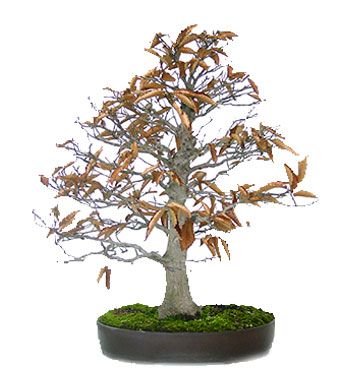Characteristics
Marcescent deciduous tree (when leaves persist until new sprouting) with smooth silvery bark.
Location
Outdoor all year. In dry climates, shade in summer and ensure environmental humidity by spraying very pure water.
Watering
Abundant in summer, moderate in winter.
Fertilization
Spring and fall.
Re-potting
Every 3 or 5 years, at the beginning of spring sprouting.
Substrate
100% Akadama, or mixed with a 20% of volcanic gravel.
Pruning and pinching
Pruning
In autumn, at the time when leaves change color, or at the beginning of spring, if it coincides with the transplant.
Pinching
To be done at the bud opening time, removing the tips with your fingers, leaving only the two incipient leaves, before they grow.
If not done so, when shoots have already grown up to 6 to 8 leaves, cut down to 2 leaves.
Wiring
Spring and fall.
Curiosities
The fruit, called beechnut or beechmast, is edible, it ripens in autumn. If the summer is dry, it will flower a lot the following year. Formerly, the pig herds that were rooted in the beech trees facilitated the germination of the beech seeds. The so called beech forests are formed solely by this species. In our country we can find beautiful beech forests in the province of Girona, near Olot, La Fageda d’en Jordá, and in Navarra, Selva de Irati, among others.

